 |
||||||||||
Updated: July 28, 2026
NK-cell Therapy: Better than a transplant?
GVL without GVHD?
Having Your Cake and Eating It Too
 New research findings point to NK (Natural Killer) cells as the most potent cell line capable of GVL (graft-versus-leukemia), but these cells do not seem to do as much GVHD (Graft-Versus-Host-Disease). A brand new clinical trial launched at the University of Minnesota uses haplo NK cells in an attempt to get the much desired GVL, while steering clear of the dreaded GVHD. This is an early stage trial but one with sufficient potential that CLL Topics has decided to sponsor it and fund part of its cost. Most of our patients will have access to haplo donors, since children are by definition haplo match to their parents. For late stage patients unsure about submitting to the risks of a stem cell transplant, or who do not have suitable adult donors, this NK cell clinical trial may be a good fit. Our review NK-cell Therapy: Better than a transplant? describes the background, rationale and advantages of this approach, as well as providing inclusion criteria and contact information. (7/28/2008)
New research findings point to NK (Natural Killer) cells as the most potent cell line capable of GVL (graft-versus-leukemia), but these cells do not seem to do as much GVHD (Graft-Versus-Host-Disease). A brand new clinical trial launched at the University of Minnesota uses haplo NK cells in an attempt to get the much desired GVL, while steering clear of the dreaded GVHD. This is an early stage trial but one with sufficient potential that CLL Topics has decided to sponsor it and fund part of its cost. Most of our patients will have access to haplo donors, since children are by definition haplo match to their parents. For late stage patients unsure about submitting to the risks of a stem cell transplant, or who do not have suitable adult donors, this NK cell clinical trial may be a good fit. Our review NK-cell Therapy: Better than a transplant? describes the background, rationale and advantages of this approach, as well as providing inclusion criteria and contact information. (7/28/2008)
Harvey's Journal
Reports on an Umbilical Cord Stem Cell Transplant
Read What Chaya and Harvey Say about His Transplant
 We have launched a new online journal,
detailing the background and stages of a cord blood stem cell transplant for our case
study patient, Harvey. Please do visit. Your comments are welcome. (2/25/08)
We have launched a new online journal,
detailing the background and stages of a cord blood stem cell transplant for our case
study patient, Harvey. Please do visit. Your comments are welcome. (2/25/08)
MUD Transplants at the NCI
NIH Will Pick Up the Tab
Brand New Protocol Makes Its Debut
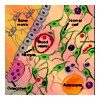 The NCI has just announced a new mini-allo MUD stem cell transplant clinical trial
designed to evaluate the relative efficacy of two different methods of handling GVHD
(graft versus host disease). Patients should take additional – and particular
– notice of the fact that the NCI will pay for the entire protocol – from
cytoreduction to transplant and post-transplant monitoring. Patients with a well
matched unrelated donor (MUD) but without adequate insurance will find this trial
may open a door that is otherwise closed. To find out more please read
MUD Transplants at the NCI. (1/18/08)
The NCI has just announced a new mini-allo MUD stem cell transplant clinical trial
designed to evaluate the relative efficacy of two different methods of handling GVHD
(graft versus host disease). Patients should take additional – and particular
– notice of the fact that the NCI will pay for the entire protocol – from
cytoreduction to transplant and post-transplant monitoring. Patients with a well
matched unrelated donor (MUD) but without adequate insurance will find this trial
may open a door that is otherwise closed. To find out more please read
MUD Transplants at the NCI. (1/18/08)
Opinion: What Say You, Dr. Expert?
Viewpoints from Noted CLL Experts
Making Sensible Decisions About Stem Cell Transplants
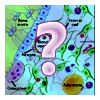 The clinical research community is slowly coming to grips with the question of when a stem cell transplant makes sense in CLL. The mortality and GVHD risks associated with transplants are definite deterrents but there are substantial survival risks, too, in not taking definitive action when faced with aggressive, poor-prognostic or refractory disease. Four of our favorite CLL experts from major research centers have been generous in sharing their personal viewpoints on the question. You can read their opinions in our article, "What Say You, Dr. Expert?" (9/10/07)
The clinical research community is slowly coming to grips with the question of when a stem cell transplant makes sense in CLL. The mortality and GVHD risks associated with transplants are definite deterrents but there are substantial survival risks, too, in not taking definitive action when faced with aggressive, poor-prognostic or refractory disease. Four of our favorite CLL experts from major research centers have been generous in sharing their personal viewpoints on the question. You can read their opinions in our article, "What Say You, Dr. Expert?" (9/10/07)
Cord Blood Transplants
Review of the State of the Art
Greatly Improved Odds: but Transplant Mortality Remains
 The state of the art in cord blood transplants has come a long way in the past few years. Originally attempted only with children because of the limited stem cell dose available in umbilical cords, these procedures have evolved to include double cords and are now producing results in adults comparable with those from adult donor transplants. We review the results from the University of Minnesota and elsewhere and explain the concepts involved in our article titled Cord Blood Transplants: State of the Art. For many patients who do not have a matched sibling or unrelated adult donor, cord blood transplants are the lifeline of hope for a durable remission and perhaps a cure. (8/11/07)
The state of the art in cord blood transplants has come a long way in the past few years. Originally attempted only with children because of the limited stem cell dose available in umbilical cords, these procedures have evolved to include double cords and are now producing results in adults comparable with those from adult donor transplants. We review the results from the University of Minnesota and elsewhere and explain the concepts involved in our article titled Cord Blood Transplants: State of the Art. For many patients who do not have a matched sibling or unrelated adult donor, cord blood transplants are the lifeline of hope for a durable remission and perhaps a cure. (8/11/07)
Catch 22 — The Transplant Minefield
Balancing the Chance of a Real Cure Against Transplant Mortality Risk
Expert Opinions Diverge on Timing
 Many CLL patients with adverse prognostic indicators know that sooner or later they will have to face the prospect of a stem cell transplant. Current research shows improving results from mini-allo transplants for CLL patients, especially if they have clean remissions and are otherwise in good health going into the transplants. While this might argue for early, elective transplants for some patients the mortality risks are still significant and there is as yet no consensus among transplant experts on timing and exhaustion of other therapy options. To understand the issues involved, please read our case study of an anonymous patient volunteer in Catch 22 — The Transplant Minefield . (7/4/07)
Many CLL patients with adverse prognostic indicators know that sooner or later they will have to face the prospect of a stem cell transplant. Current research shows improving results from mini-allo transplants for CLL patients, especially if they have clean remissions and are otherwise in good health going into the transplants. While this might argue for early, elective transplants for some patients the mortality risks are still significant and there is as yet no consensus among transplant experts on timing and exhaustion of other therapy options. To understand the issues involved, please read our case study of an anonymous patient volunteer in Catch 22 — The Transplant Minefield . (7/4/07)
GVHD Developments
A New Agent to Improve Chances of Survival
GVHD: A Pebble in the Transplant Shoe
 While mini allo stem cell transplants hold the promise of a cure for this disease, the risk of mortality and graft versus host disease have been major deterrents to using this technique in high risk CLL patients. New results from research in managing the worst effects of GVHD point the way to improved survival and transplant related symptoms. We review encouraging results reported by the team at the Fred Hutchinson Cancer Research Center in our article GVHD: A Pebble in the Transplant Shoe and explain why this could be very important to CLL patients with poor prognostics. (5/3/07)
While mini allo stem cell transplants hold the promise of a cure for this disease, the risk of mortality and graft versus host disease have been major deterrents to using this technique in high risk CLL patients. New results from research in managing the worst effects of GVHD point the way to improved survival and transplant related symptoms. We review encouraging results reported by the team at the Fred Hutchinson Cancer Research Center in our article GVHD: A Pebble in the Transplant Shoe and explain why this could be very important to CLL patients with poor prognostics. (5/3/07)
Almost Free Stem Cell Transplants
NIH Clinical Trial for Sibling Donor Transplants
A Unique Opportunity
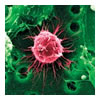 The National Institutes of Health in Bethesda, MD are conducting a clinical trial for sibling donor
transplants that may offer a unique therapeutic opportunity for CLL patients with aggressive disease
and poor prognostics. In this article,
Stem Cell Transplants – Free of Charge (Almost!), we review the background and rationale for this
clinical trial, as well as give you contact information. Potential participants both in the US and
overseas should carefully consider this unique opportunity that might otherwise be
out of their reach for financial reasons. (1/3/07)
The National Institutes of Health in Bethesda, MD are conducting a clinical trial for sibling donor
transplants that may offer a unique therapeutic opportunity for CLL patients with aggressive disease
and poor prognostics. In this article,
Stem Cell Transplants – Free of Charge (Almost!), we review the background and rationale for this
clinical trial, as well as give you contact information. Potential participants both in the US and
overseas should carefully consider this unique opportunity that might otherwise be
out of their reach for financial reasons. (1/3/07)
Poor Prognostics
The Road to a Stem Cell Transplant
Greg's Story: A Cautionary Tale
 Greg's Story is a case study
based on the notes of an anonymous patient. It is a cautionary tale about the dangers inherent in
a relapse in the face of poor prognostics. Delaying the decision to seek a mini-allo transplant,
the only known cure at this point for poor prognostic disease, can result in that choice being
removed suddenly. You will learn why Greg feels poor prognosis CLL should be taken very seriously
and why a decision on pursuing a mini-allo should be made early in the process. (12/17/06)
Greg's Story is a case study
based on the notes of an anonymous patient. It is a cautionary tale about the dangers inherent in
a relapse in the face of poor prognostics. Delaying the decision to seek a mini-allo transplant,
the only known cure at this point for poor prognostic disease, can result in that choice being
removed suddenly. You will learn why Greg feels poor prognosis CLL should be taken very seriously
and why a decision on pursuing a mini-allo should be made early in the process. (12/17/06)
Graft versus Host Disease
Controlling this Killer is the Holy Grail of Transplants
GVHD in Allogeneic Transplants
 Graft-versus-host-disease (GVHD) is an example of systemic and potentially life threatening
inflammation. It is one of the major causes of death in stem cell transplants. Controlling
GVHD is the holy grail of all transplant researchers. Our article,
Graft versus Host Disease, discusses the causes of GVHD
and some commonsense things you can do to protect yourself. (7/27/05)
Graft-versus-host-disease (GVHD) is an example of systemic and potentially life threatening
inflammation. It is one of the major causes of death in stem cell transplants. Controlling
GVHD is the holy grail of all transplant researchers. Our article,
Graft versus Host Disease, discusses the causes of GVHD
and some commonsense things you can do to protect yourself. (7/27/05)
Allogeneic Stem Cell Transplants
The Only Real Cure Out There, for Now
New Papers Spell Out the Chances for Success
 As the years go by, survival statistics from allogeneic stem
cell transplants performed in the past have been accumulating.
We review the surprising results reported in two newly published
papers from the Hutch. Read more in our article,
The Only Real Cure Out There, for Now. (7/19/05)
As the years go by, survival statistics from allogeneic stem
cell transplants performed in the past have been accumulating.
We review the surprising results reported in two newly published
papers from the Hutch. Read more in our article,
The Only Real Cure Out There, for Now. (7/19/05)
Matching Made Simple
Is a Bone Marrow Transplant in Your Future?
Allogeneic Stem Cell Transplants Work Better with Closer Matches
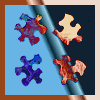 HLA matching of the potential donor with the recipient is the first step
in allogeneic stem cell transplants, whether the stem cells are obtained
from an adult donor or from umbilical cord blood. With increasing frequency,
stem cell transplantation is viewed as an early alternative for those with
aggressive disease or high risk profiles, especially for younger patients.
Familiarity with the concept of tissue typing will be useful as you embark
upon the transplant journey. To take some of the mystery out of this process
we present
Matching Made Simple. (12/17/04)
HLA matching of the potential donor with the recipient is the first step
in allogeneic stem cell transplants, whether the stem cells are obtained
from an adult donor or from umbilical cord blood. With increasing frequency,
stem cell transplantation is viewed as an early alternative for those with
aggressive disease or high risk profiles, especially for younger patients.
Familiarity with the concept of tissue typing will be useful as you embark
upon the transplant journey. To take some of the mystery out of this process
we present
Matching Made Simple. (12/17/04)
AMD3100: Stem Cell Mobilization for Transplants
New Agent in Clinical Trial
Harvesting Sufficient Stem Cells for Auto BMTs
 The techniques of stem cell transplantation have been improving over the years.
AMD3100, a new CXCR4
blocker originally developed for AIDS treatment, shows promise in mobilizing
stem cells for harvesting in both autologous and allogeneic stem cell
transplantation procedures. (12/10/03)
The techniques of stem cell transplantation have been improving over the years.
AMD3100, a new CXCR4
blocker originally developed for AIDS treatment, shows promise in mobilizing
stem cells for harvesting in both autologous and allogeneic stem cell
transplantation procedures. (12/10/03)
Primer on Bone Marrow Stem Cell Transplants
All or Nothing Approaches
Transplant of Allogeneic Hematopoietic Stem Cells Offers Hope of Cure
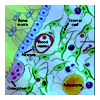 In this article,
Primer on Bone Marrow Stem Cell Transplants, we review the basics of
stem cell transplants, both autologous and allogeneic. These are complex,
protracted, multi-step procedures with high risk and high costs. However,
techniques have been progressively refined and the results can be impressive,
especially with allogeneic transplants if a matching donor is available. (5/23/03)
In this article,
Primer on Bone Marrow Stem Cell Transplants, we review the basics of
stem cell transplants, both autologous and allogeneic. These are complex,
protracted, multi-step procedures with high risk and high costs. However,
techniques have been progressively refined and the results can be impressive,
especially with allogeneic transplants if a matching donor is available. (5/23/03)
 Enter Keywords: |
———
Disclaimer: The content of this website is intended for information only and is NOT meant to be medical advice. Please be sure to consult and follow the advice of your doctors on all medical matters.
Copyright Notice:
Copyright © 2026-2007 CLL Topics, Inc. All Rights Reserved.
All materials contained on this site are protected by United States copyright law and may not be reproduced, distributed, transmitted, displayed, published or broadcast without the prior written permission of CLL Topics, Inc. You may not alter or remove any trademark, copyright or other notice from copies of the content.
However, you may download and print material from CLLTopics.org exclusively for your personal, noncommercial use.
———
